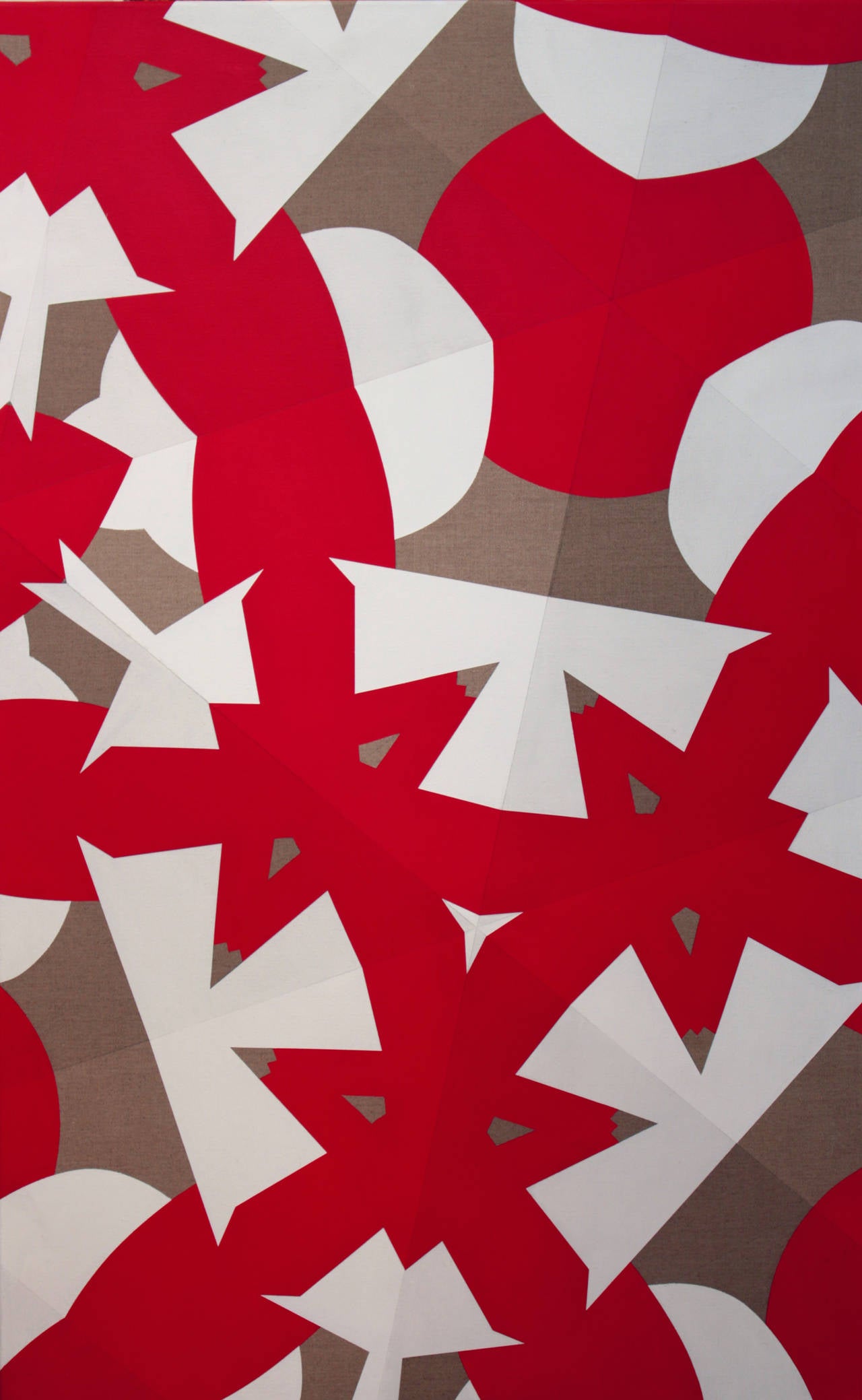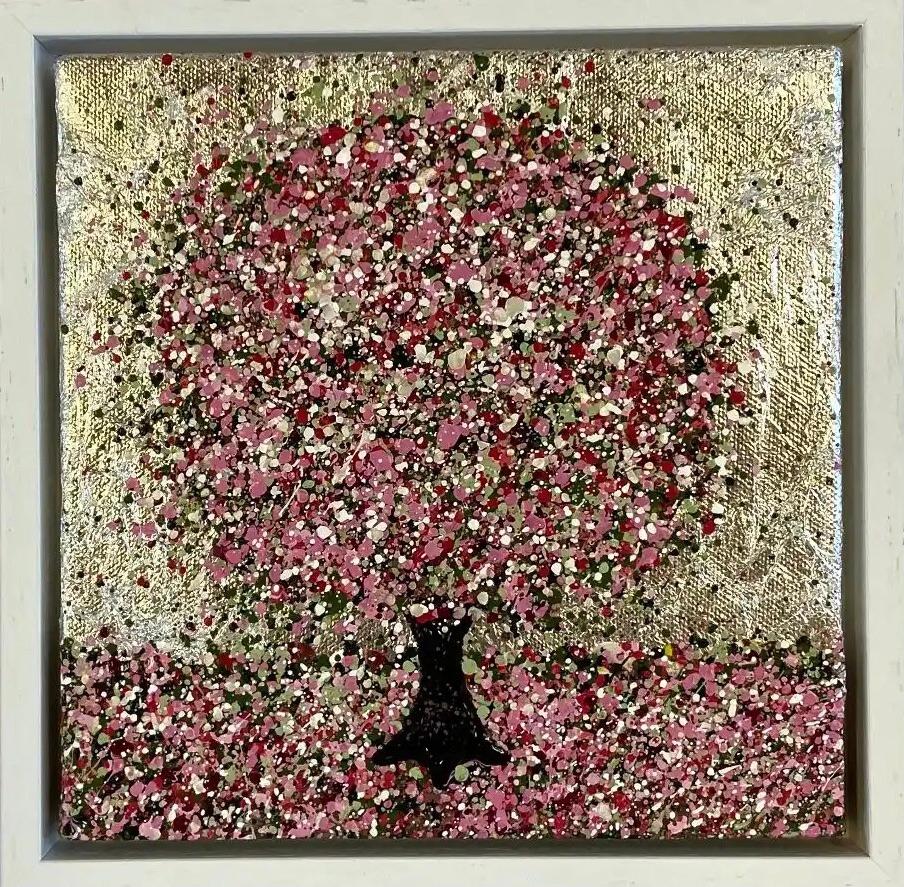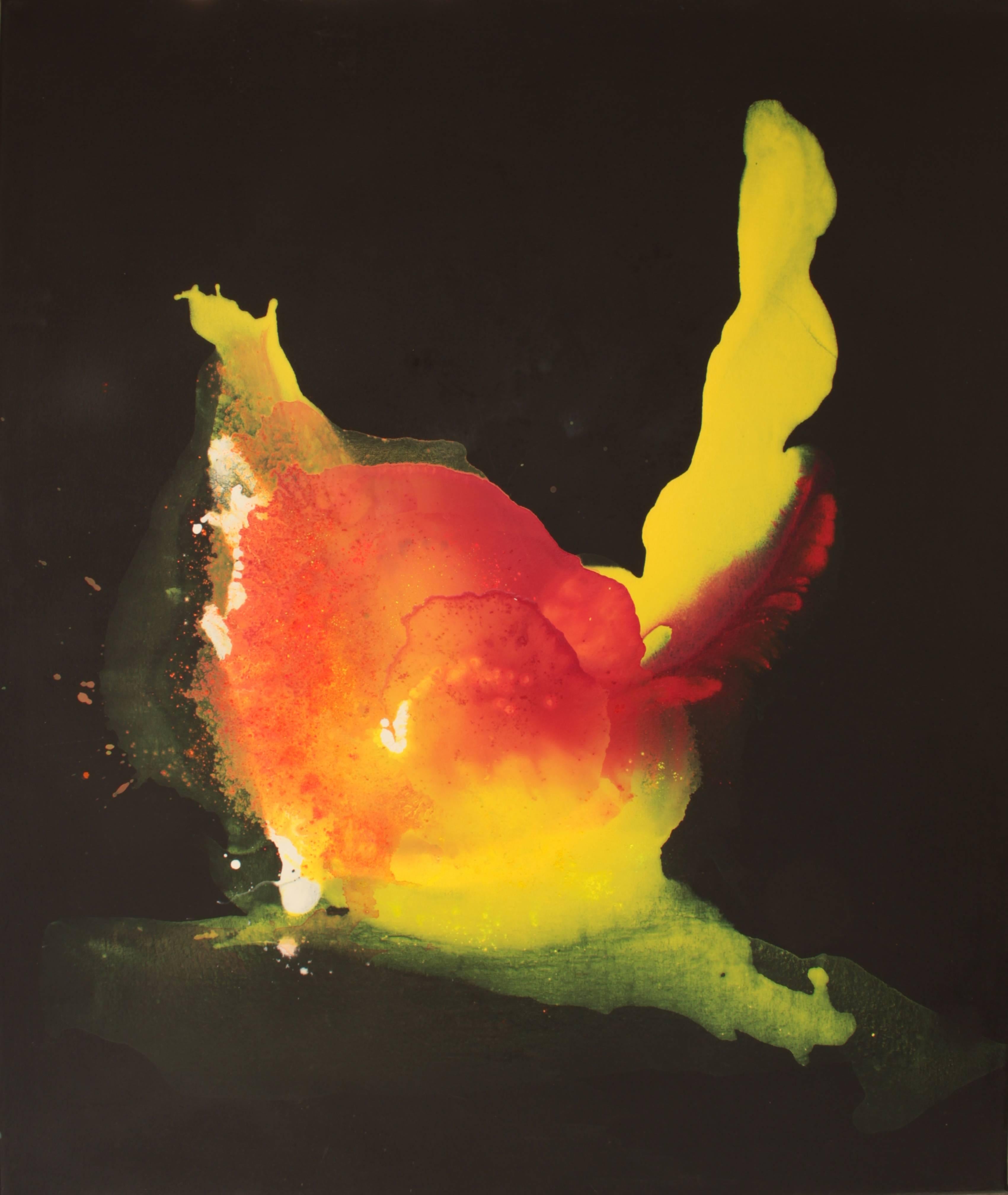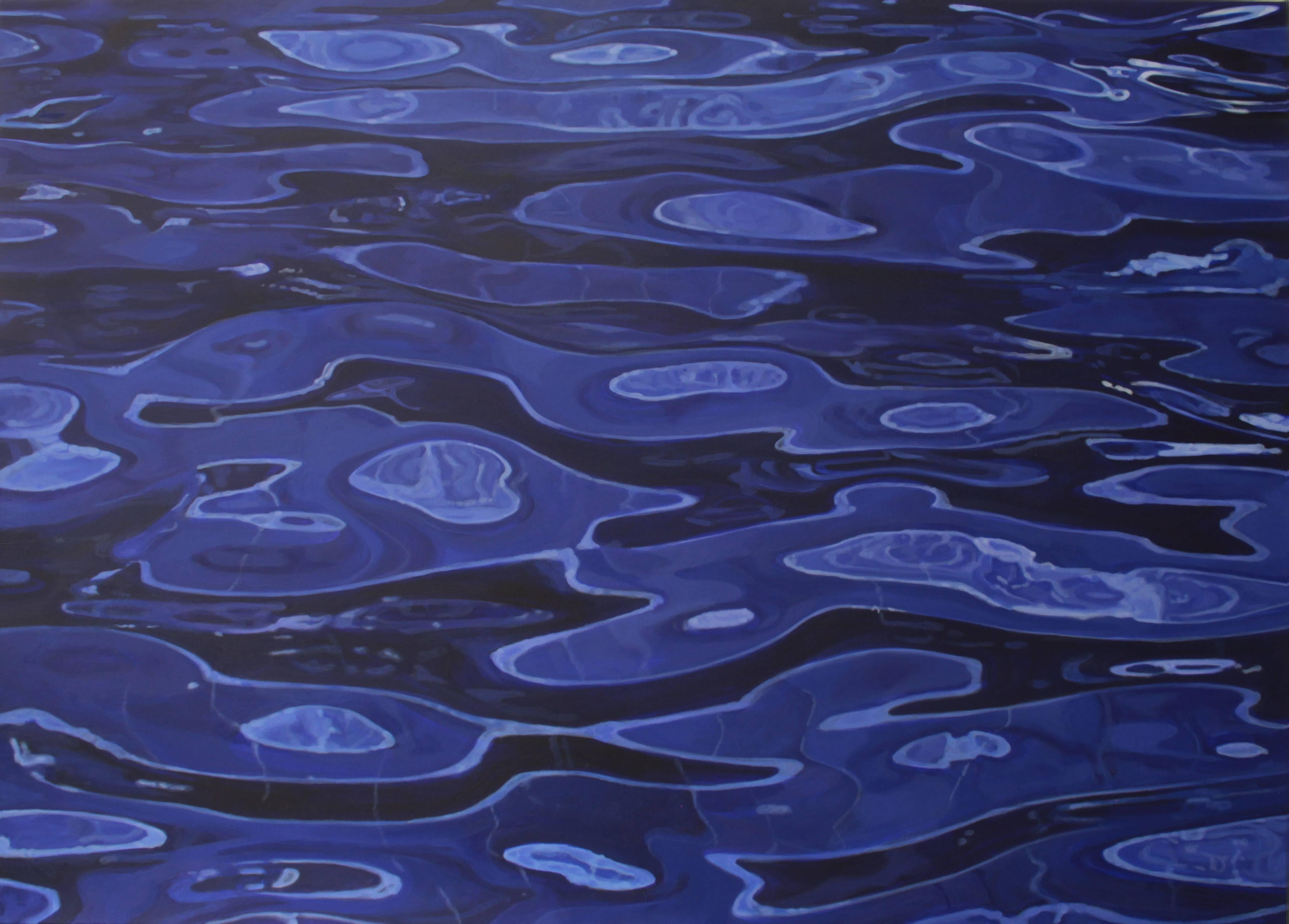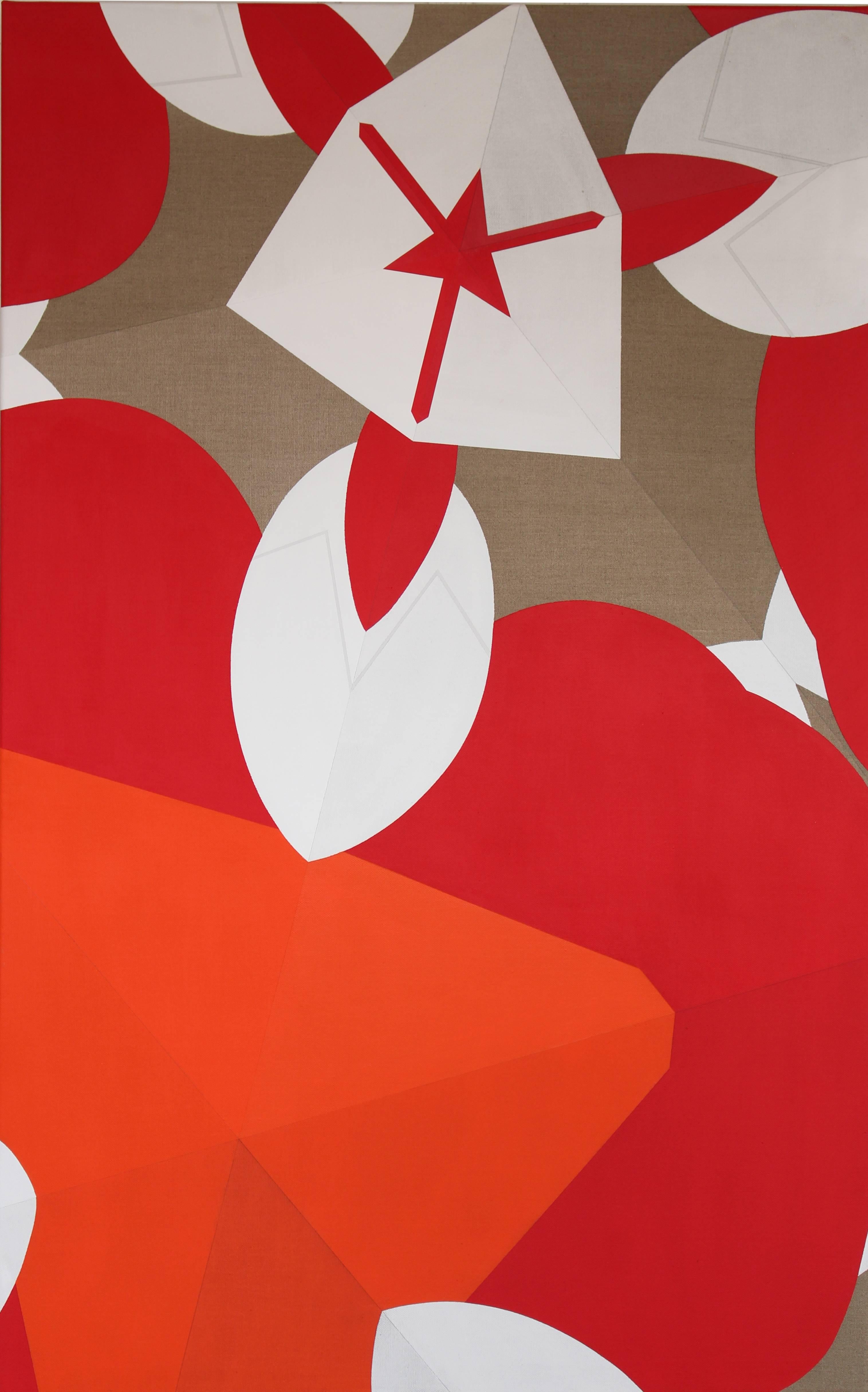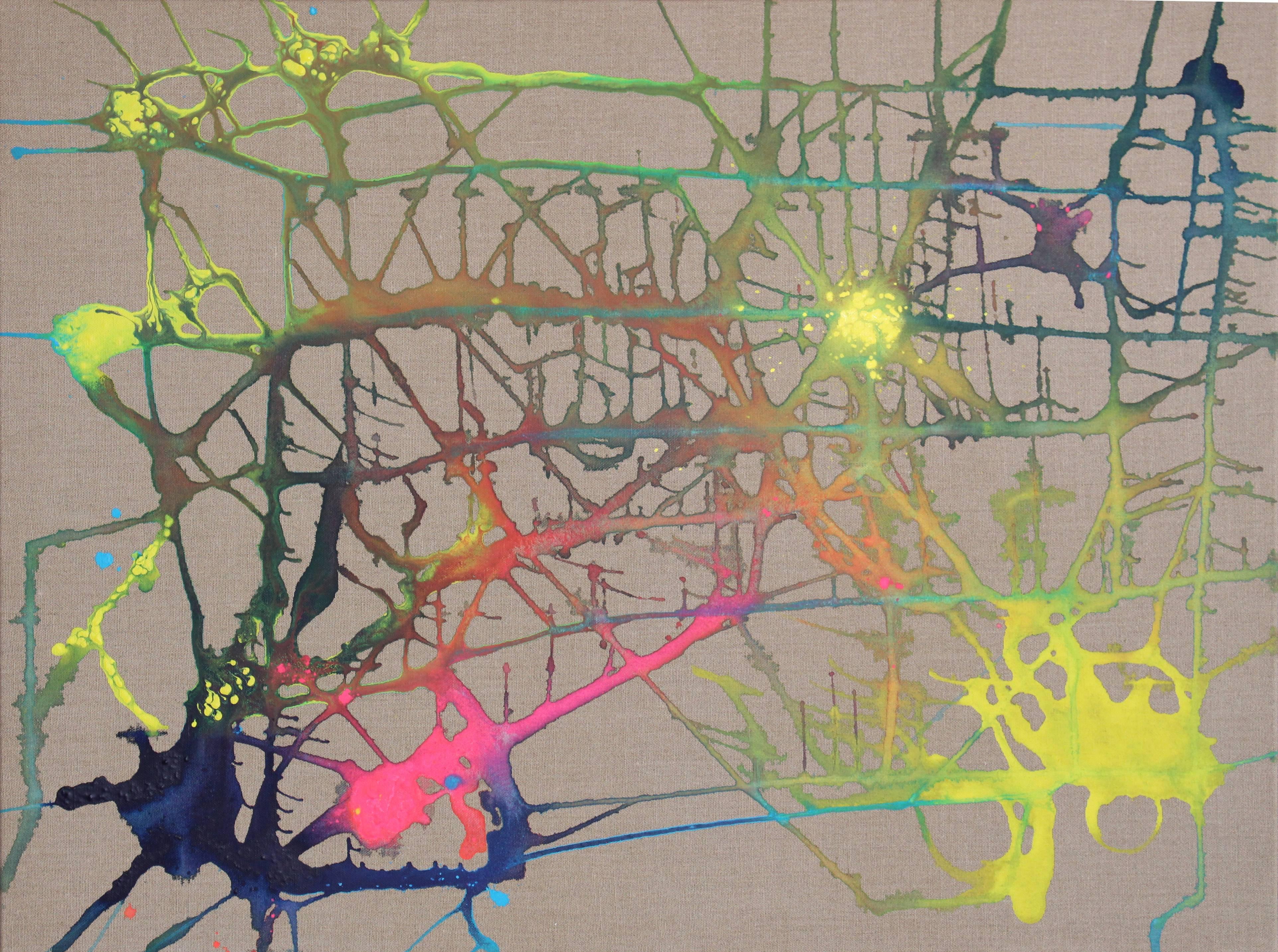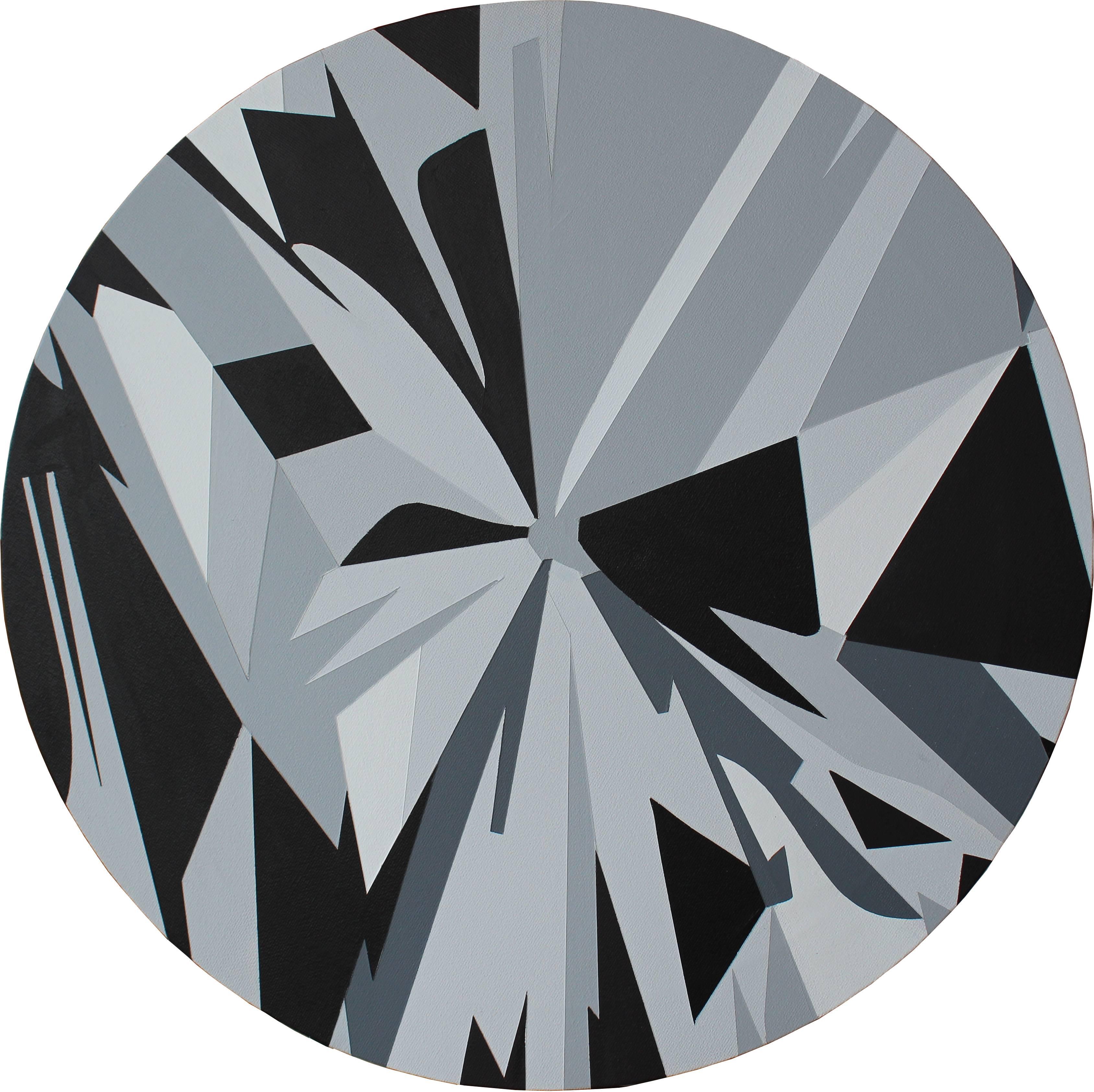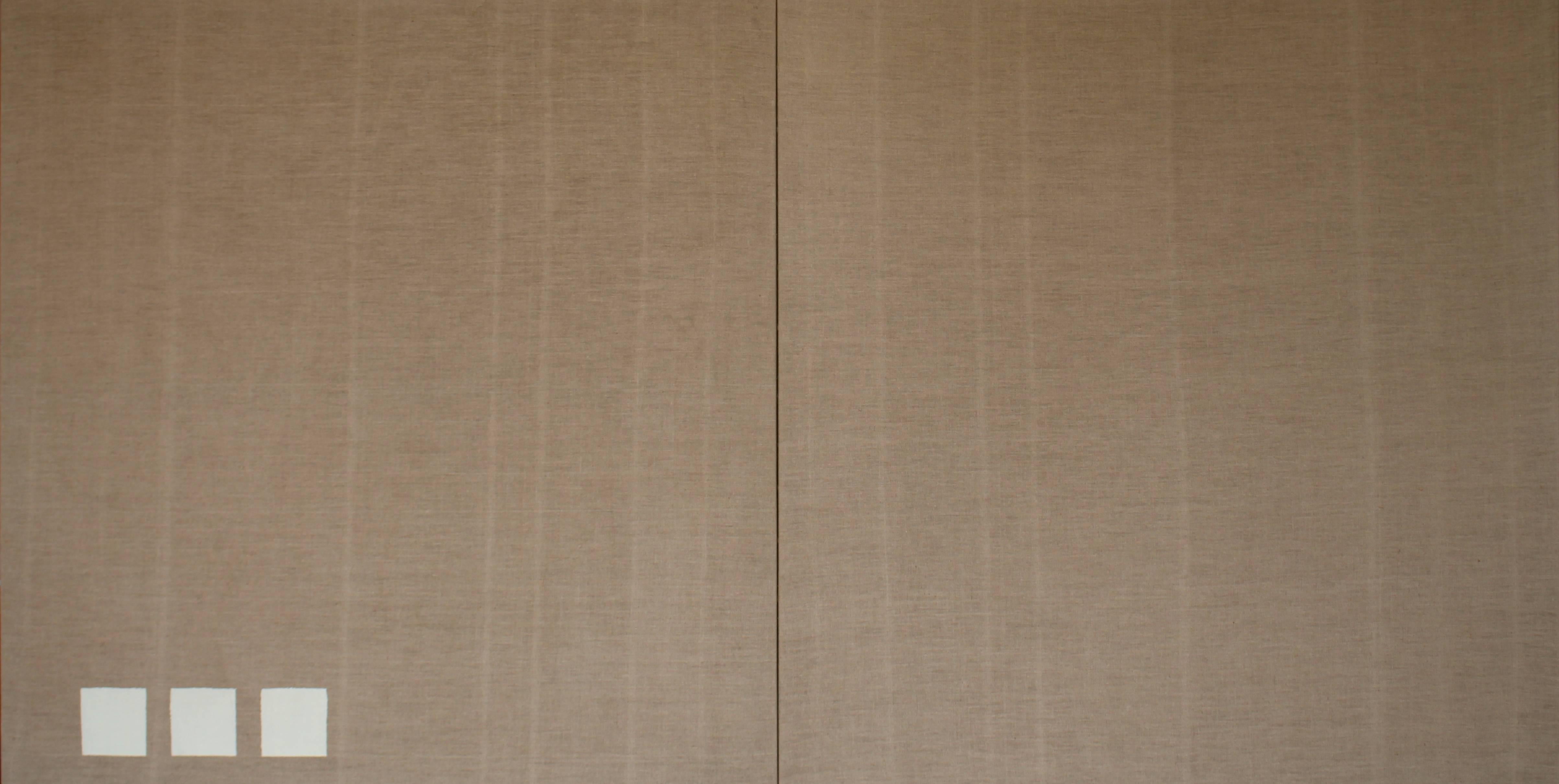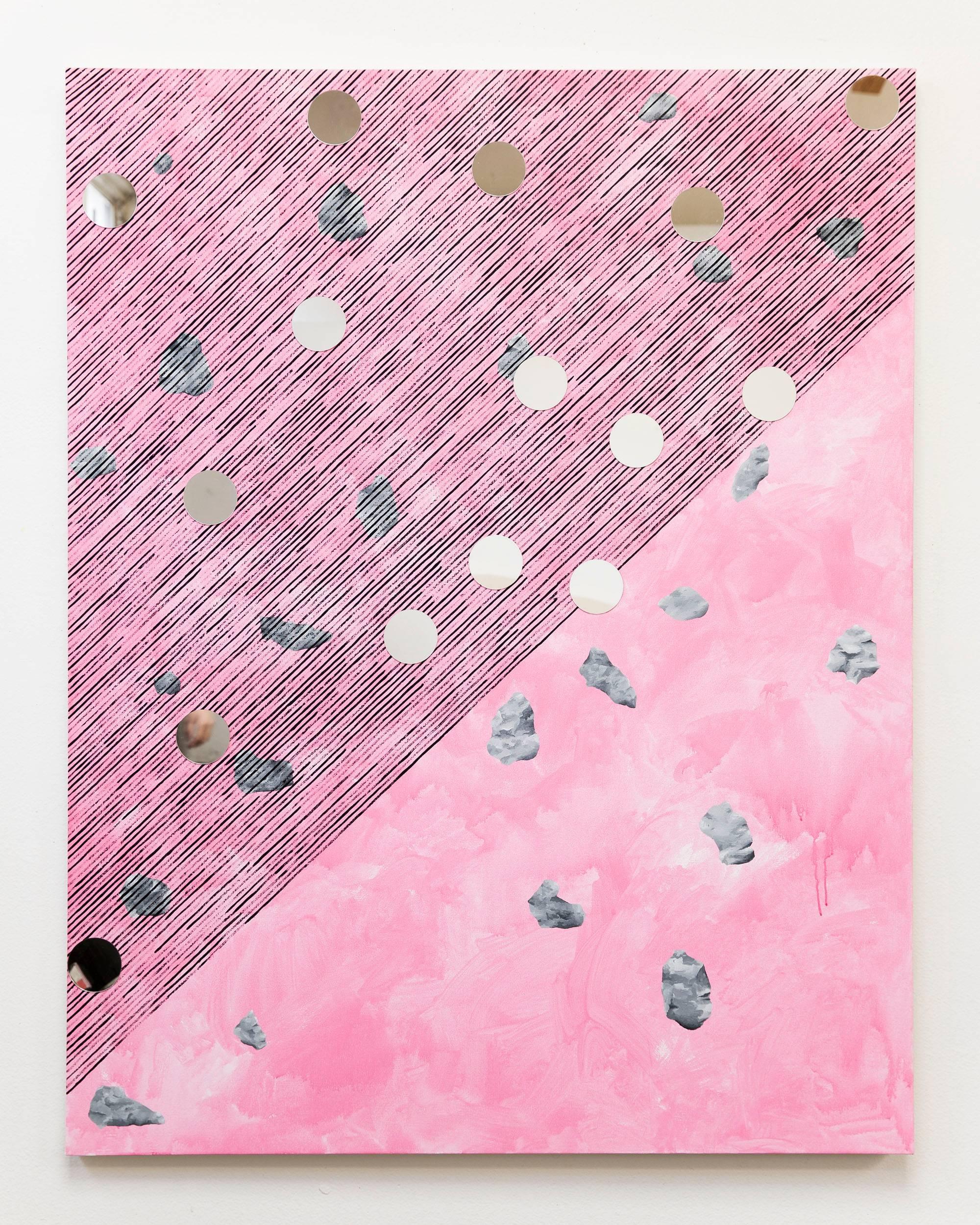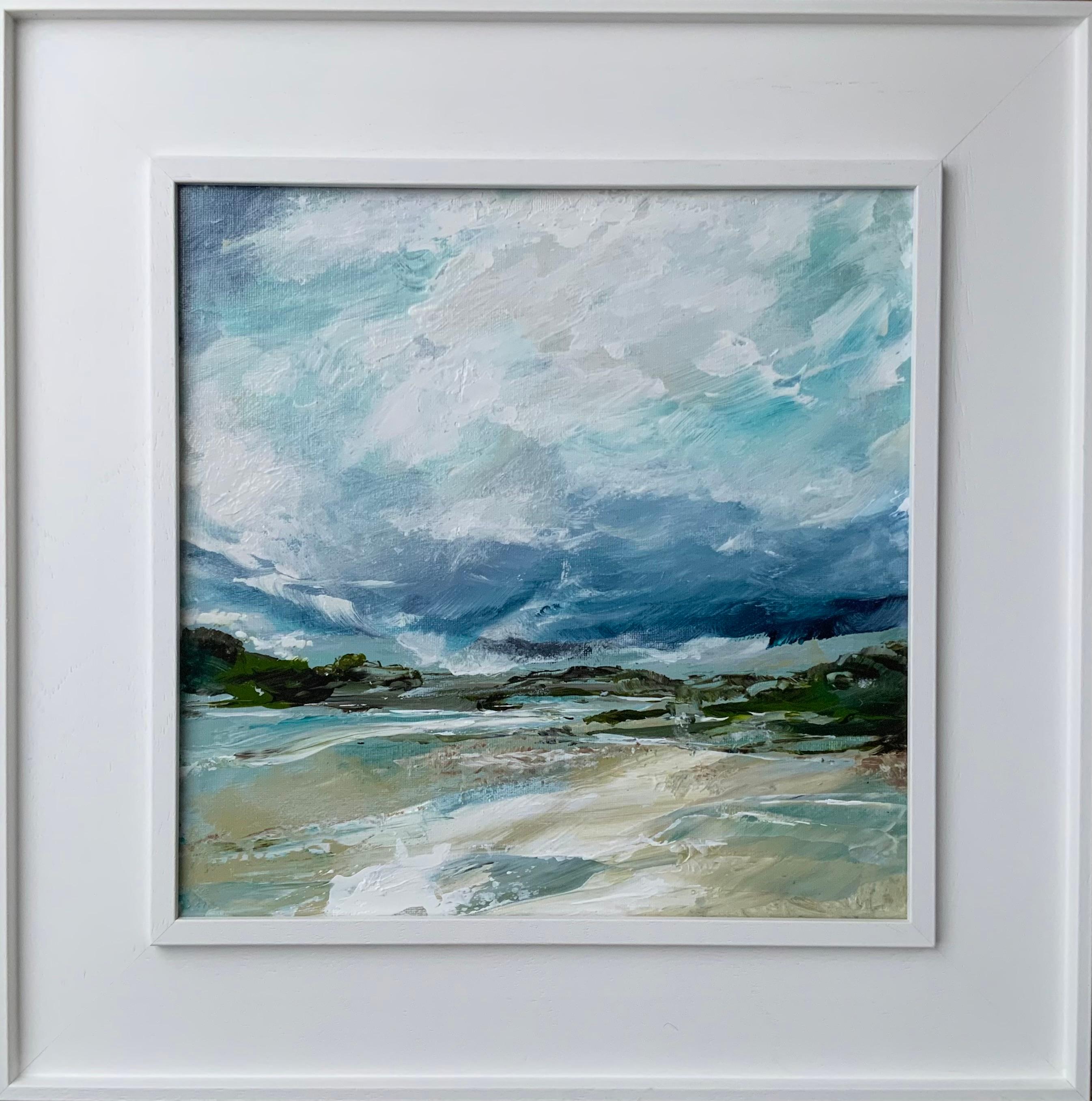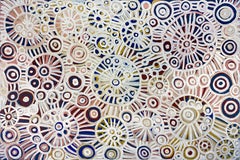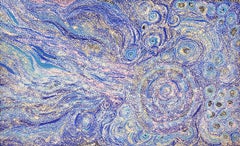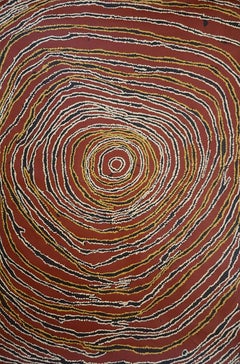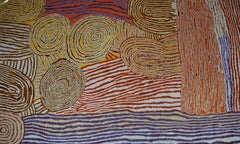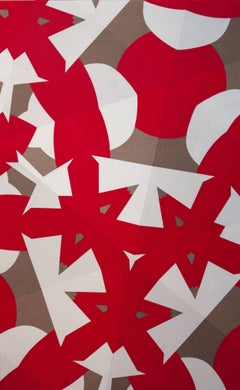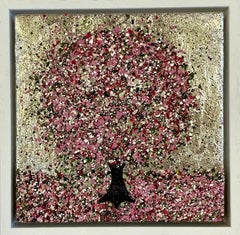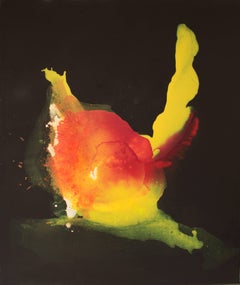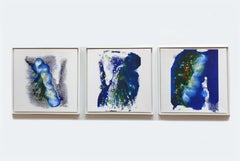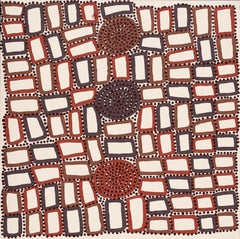
Song Cycles
View Similar Items
Want more images or videos?
Request additional images or videos from the seller
1 of 12
WALALA TJAMPALTJARRI Song Cycles2016
2016
About the Item
- Creator:WALALA TJAMPALTJARRI (1967, Aboriginal Australian)
- Creation Year:2016
- Dimensions:Height: 23.63 in (60 cm)Width: 23.63 in (60 cm)
- Medium:
- Movement & Style:
- Period:
- Condition:
- Gallery Location:Miami, FL
- Reference Number:1stDibs: LU13612550882
About the Seller
5.0
Gold Seller
Premium sellers maintaining a 4.3+ rating and 24-hour response times
Established in 2011
1stDibs seller since 2012
73 sales on 1stDibs
Typical response time: 1 hour
Authenticity Guarantee
In the unlikely event there’s an issue with an item’s authenticity, contact us within 1 year for a full refund. DetailsMoney-Back Guarantee
If your item is not as described, is damaged in transit, or does not arrive, contact us within 7 days for a full refund. Details24-Hour Cancellation
You have a 24-hour grace period in which to reconsider your purchase, with no questions asked.Vetted Professional Sellers
Our world-class sellers must adhere to strict standards for service and quality, maintaining the integrity of our listings.Price-Match Guarantee
If you find that a seller listed the same item for a lower price elsewhere, we’ll match it.Trusted Global Delivery
Our best-in-class carrier network provides specialized shipping options worldwide, including custom delivery.More From This Seller
View AllMy Grandmother's Country
By Imitjala Curley
Located in Miami, FL
Imitjala Curley was born in 1953 in Pukatja (Ernabella) in the APY Lands of South Australia. She grew up around Ernabella Mission, which operated as a sheep station until the Presbyt...
Category
2010s Contemporary Abstract Paintings
Materials
Linen, Cotton Canvas, Acrylic
Minyma Malilu
Located in Miami, FL
Carolanne Ken was born in 1971 and resides in Kaltjiti, formerly Fregon, located in the Anangu Pitjantjatjara Yankunytjatjara (APY) Lands. Carloanne went to school in Kaltjiti as a y...
Category
2010s Contemporary Abstract Paintings
Materials
Linen, Cotton Canvas, Acrylic
Woman's Dreaming
By Walangkura Napanangka
Located in Miami, FL
As one of the last generation to remember a childhood lived in the desert hunting and gathering with her family, Walangkura Napanangka's paintings recall the stories of country and the location of specific sites in her traditional homeland west of the salt lake of Karrkurutinjinya (Lake Macdonald).
Born around 1946, at Tjitururrnga west of Kintore, in the remote and arid country between the Northern Territory and Western Australia, she lived with her father Rantji Tjapangati and mother Inyuwa Nampitjinpa and later, while still a teenager, travelled by foot with her family over the hundreds of kilometres from their remote desert home eventually joining Uta Uta Tjangala's group as they walked in to the settlements of Haasts Bluff and then Papunya.
The lure of settlement life with its promise of plentiful food and water belied the harsh conversion they would make to an alien lifestyle with its many problems and unfamiliar demands. The upheaval however, was ameliorated to some degree by the proximity of her immediate family including her mother Inyuwa, adoptive father Tutuma Tjapangati, and sister Pirrmangka Napanangka (now deceased) all of whom became artists.
Relocated to the community of Kintore in 1981 when the outstation movement began, Walangkura participated in the historic women's collaborative painting project (1994) that was initiated by the older women as a means of re-affirming their own spiritual and ancestral roots. It was a time of specifically female singing, ceremony and painting, away from the gaze of outsiders and men folk. The huge and colourful canvases that emerged from the women's camp were 'alive with the ritual excitement and narrative intensity of the occasion' (Johnson 2000: 197).
Within a year, Papunya Tula Artists, now established at Kintore, had taken on many of these women as full-time artists, revitalising the company after the deaths of many of the original 'painting men'. While individual women forged their own stylistic trajectory, these paintings were immediately distinguishable from the men's more cerebral and symmetrical style. They radiated an exuberant and vibrant energy, the felt heart-beat of women's affinity to country and spirit.
Walangkura's early works, created from 1996 onward, are characterized by masses of small markings and motifs covering large areas of canvas. Her favorite colour, a deep sandy orange predominates, accentuated against more somber blacks and reds and dusky greens or yellows. More recent works show a gestural quality though still tightly packed with an intensity of geometric line work representing sandhills. In a sense this provides a strong visual and contextual link to the men's linear style as exemplified by the works of George Tjungurrayi...
Category
2010s Contemporary Abstract Paintings
Materials
Linen, Cotton Canvas, Acrylic
Tjintjintjin
By Walangkura Napanangka
Located in Miami, FL
As one of the last generation to remember a childhood lived in the desert hunting and gathering with her family, Walangkura Napanangka's paintings recall the stories of country and the location of specific sites in her traditional homeland west of the salt lake of Karrkurutinjinya (Lake Macdonald).
Born around 1946, at Tjitururrnga west of Kintore, in the remote and arid country between the Northern Territory and Western Australia, she lived with her father Rantji Tjapangati and mother Inyuwa Nampitjinpa and later, while still a teenager, travelled by foot with her family over the hundreds of kilometres from their remote desert home eventually joining Uta Uta Tjangala's group as they walked in to the settlements of Haasts Bluff and then Papunya.
The lure of settlement life with its promise of plentiful food and water belied the harsh conversion they would make to an alien lifestyle with its many problems and unfamiliar demands. The upheaval however, was ameliorated to some degree by the proximity of her immediate family including her mother Inyuwa, adoptive father Tutuma Tjapangati, and sister Pirrmangka Napanangka (now deceased) all of whom became artists.
Relocated to the community of Kintore in 1981 when the outstation movement began, Walangkura participated in the historic women's collaborative painting project (1994) that was initiated by the older women as a means of re-affirming their own spiritual and ancestral roots. It was a time of specifically female singing, ceremony and painting, away from the gaze of outsiders and men folk. The huge and colourful canvases that emerged from the women's camp were 'alive with the ritual excitement and narrative intensity of the occasion' (Johnson 2000: 197).
Within a year, Papunya Tula Artists, now established at Kintore, had taken on many of these women as full-time artists, revitalising the company after the deaths of many of the original 'painting men'. While individual women forged their own stylistic trajectory, these paintings were immediately distinguishable from the men's more cerebral and symmetrical style. They radiated an exuberant and vibrant energy, the felt heart-beat of women's affinity to country and spirit.
Walangkura's early works, created from 1996 onward, are characterized by masses of small markings and motifs covering large areas of canvas. Her favorite colour, a deep sandy orange predominates, accentuated against more somber blacks and reds and dusky greens or yellows. More recent works show a gestural quality though still tightly packed with an intensity of geometric line work representing sandhills. In a sense this provides a strong visual and contextual link to the men's linear style as exemplified by the works of George Tjungurrayi...
Category
2010s Contemporary Abstract Paintings
Materials
Linen, Cotton Canvas, Acrylic
Noir - Pierre I
Located in Miami, FL
Alexandre Valette holds a master's degree in Art History and is an artist with multiple artistic practices. He has been exploring drawing since his y...
Category
2010s Contemporary Abstract Paintings
Materials
Canvas, Ink, Acrylic
Agnangkere Growth
By Gloria Petyarre
Located in Miami, FL
Gloria Petyarre, sometimes referred to as Gloria Pitjara, was one of Australia s most successful and significant female artists. Her depiction of the Kurrajong bush medicine leaves-with her layered, free-flowing, swirling brushstrokes that scatter across the canvas-became her iconic motif.
Her career took off when she won the coveted 'Wynne Prize for Landscape' at the New South Wales Gallery in 1999. It was a triumph for Aboriginal art. Gloria became the first Indigenous Australian artist ever to win a major art prize at the Gallery of New South Wales.
The painting was an extraordinary new artistic statement, quite unlike any other Aboriginal artwork at that time. A huge, gold and green abstract work, it was made up of swirling leaf shaped brush strokes positioned close together on a black background. It brilliantly captured the energy and flow of leaves being scattered by a fitful wind, seaweed swirling in a change of tide, or grass billowing in the wind.
So much did this artwork fascinate the essentially nature-loving people of this country, that it was to become one of the most popular styles in Aboriginal art, bringing many a devotee to the genre because of its resonance with the viewer.
Gloria continued to paint this style for the next 20 years until her retirement in 2019 due to health issues. During that time and subsequently, the style has been adopted and adapted by several generations of her family members. However, Gloria was and is credited with being the creator of this popular style and its most collectable proponent.
Gloria's origins are in a region called Utopia, covering an area approximately 230 - 300km from Alice Springs, itself a remote town to many people.
Many of Australia's foremost Indigenous artists spring from this area, including Gloria's renowned aunt, Emily Kame Kngwarreye, deceased since 1996, and the most famous and accomplished female Indigenous Artist Australia has produced.
Gloria, her family members and her skin family, first became interested in art making by participating in the Utopia Women's Silk Batik Group introduced in 1977 and initiated by CAAMA (the Central Australian Aboriginal Media Association). Both Gloria and Emily were founding members of the group.
With up to 80 members at a time, the Batik and Tie-die project became the seeding inspiration for the artists, and its tremendous success both in Australia and overseas led to another successful project introduced in 1988, again by CAAMA.
This time, the artists were to paint on primed, stretched canvas, and many of the women took to the new medium with ease and enthusiasm, finding it more exciting to work with than the silk and batik techniques they had hitherto used.
The resulting works were exhibited at the S.H.Erwin Gallery in Sydney and several other notable galleries across Australia. It was the beginning of the Utopian Art Movement, and it was impressive enough to gain international attention. Gloria was one of the artists at the very centre of it.
As demand for Utopian art grew, so did Gloria's career. She travelled with her art to many countries and exhibited in France, Germany, the United Kingdom, Belgium, the Netherlands, Italy, the USA and Japan, and of course in regional and commercial galleries throughout Australia.
It would be easy to think that Gloria's works were limited to bush medicine leaves works, so popular were they. In fact she had quite a number of Dreamings in her portfolio. She painted the 'Thorny Mountain Devil Lizard Dreaming', a pattern of swirling coloured lines which imitate the tracks made in the sand by the lizard's tail.
Yam Dreaming, popularly executed by her aunt Emily, was also one of her commonly painted stories. She also painted Grass Seed, Pencil Yam, Emu, Bean, Small Brown Grass and Body Paint Dreamings. This breadth of subject matter and style has made her an extremely versatile artist.
Later in her career, Gloria began to paint massive 'Big Leaf' paintings, expressionistically rendered with giant brush...
Category
1990s Contemporary Abstract Paintings
Materials
Canvas, Acrylic
$4,000 Sale Price
33% Off
You May Also Like
Matrix In Creation No 12
By Claudia Fauth
Located in Berlin, DE
Acrylic paint on canvas, 2015. It comes directly from the studio of the artist.
Height 65 in ( 165 cm ), Width 39.37 in ( 100 cm )
Matrix In Creation belongs to a line of more than 2...
Category
21st Century and Contemporary Contemporary Abstract Paintings
Materials
Canvas, Acrylic
A silver Day, Original painting, Landscape, Pink Art, Textural art
By Nicky Chubb
Located in Deddington, GB
New original landscape painting by Nicky Chubb. Colourful and textured landscape painting of a tree with a pink shiny background.
ADDITIONAL INFORMATION:
signed and dated by artist...
Category
2010s Contemporary Landscape Paintings
Materials
Canvas, Acrylic
Udo Haderlein "Cosmic Snail" Abstract Painting 2017
By Udo Haderlein
Located in Berlin, DE
Acrylic color, ink and pigments on canvas, 2017. Unframed, ready to hang. Signed, dated and titled in the back. It comes directly from the studio of the artist. Dimensions: 47.64 x 3...
Category
21st Century and Contemporary Contemporary Abstract Paintings
Materials
Canvas, Ink, Acrylic, Pigment
Set of Three Pictures "Blue Fox" Acrylic Ink on Canvas by Udo Haderlein, 2018
By Udo Haderlein
Located in Berlin, DE
Only available as a set. Acrylic ink on canvas, 2018. Signed, titled and dated verso. Framed. The artworks comes directly from the artist's studio.
Measurements, each: 25.12 x 25.12 ...
Category
21st Century and Contemporary Contemporary Abstract Paintings
Materials
Canvas, Ink, Acrylic
Claudia Fauth Abstract Painting on Canvas, 2016, No Title
By Claudia Fauth
Located in Berlin, DE
Acrylic paint on canvas, 2016. Ready to hang. It comes directly from the studio of the artist.
Height: 59.45 in ( 151cm ), Width: 82.68 in ( 210 cm ), Depth: 1.69 in ( 4,3 cm )
Cla...
Category
21st Century and Contemporary Contemporary Abstract Paintings
Materials
Canvas, Acrylic
Claudia Fauth "Matrix In Creation No 4" Acrylic Painting on Canvas, 2015
By Claudia Fauth
Located in Berlin, DE
Acrylic paint on raw canvas, 2015. Ready to hang. It comes directly from the studio of the artist.
Height 64.96 in ( 165 cm ), Width 39.37 in ( 100 cm ).
Matrix In Creation belongs ...
Category
21st Century and Contemporary Contemporary Abstract Paintings
Materials
Canvas, Acrylic
Recently Viewed
View AllMore Ways To Browse
Filipino Artist Painting
Gothic Gifts
Architectural Elements Brooklyn
Laguna B
Moon Dance
Nancy Love
Newman College
Russian Tables 19th Century
S C Johnson
Joan Rivers
96 Inch Painting
Aqua Oil Painting
New York Sunshine
Painting Green Teal Framed
Totem Series
Large Horizontal Modern Paintings
Mark Rhode
Mexican Abstract Painting Artist Jose
